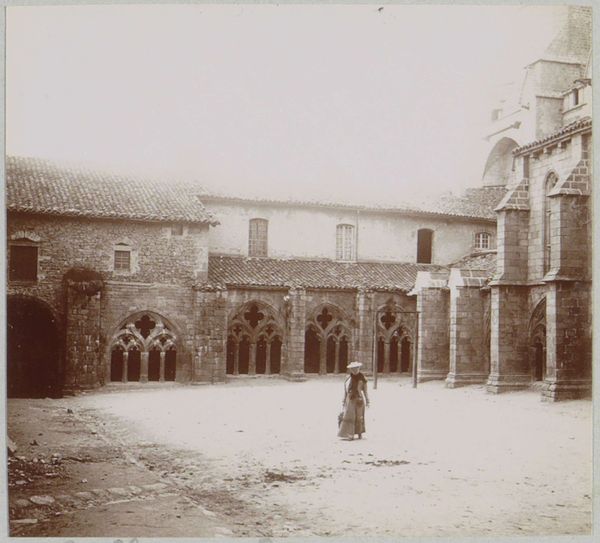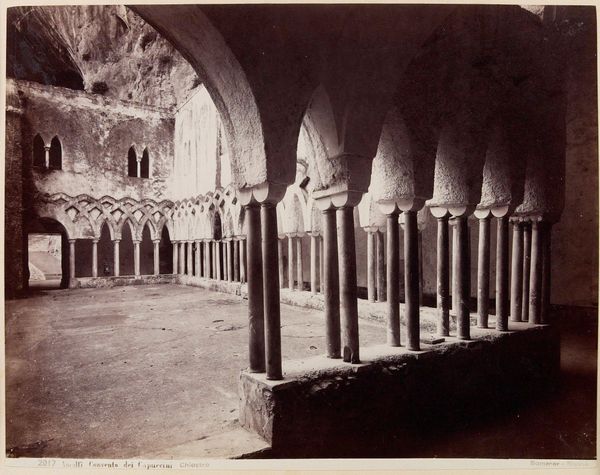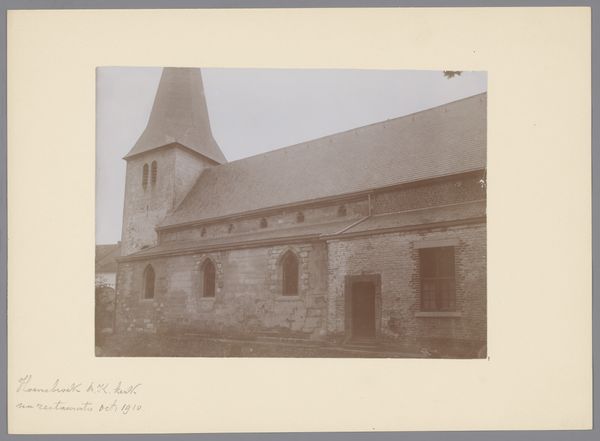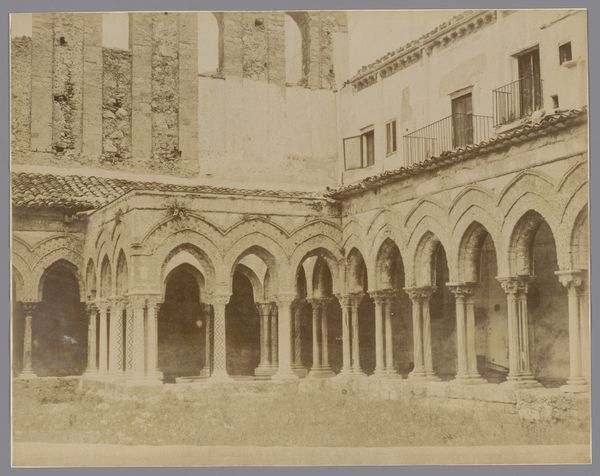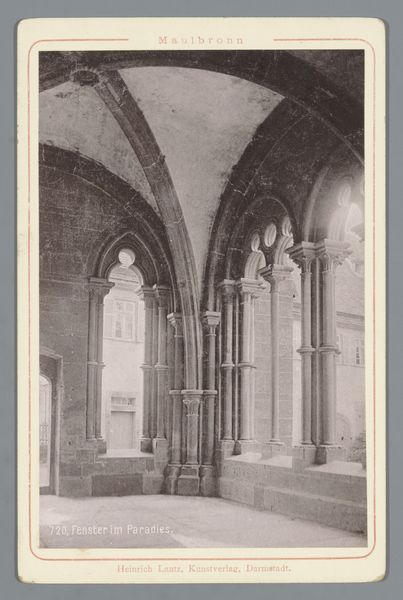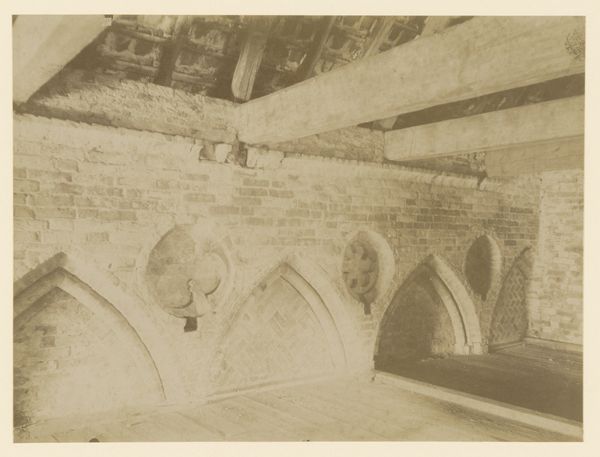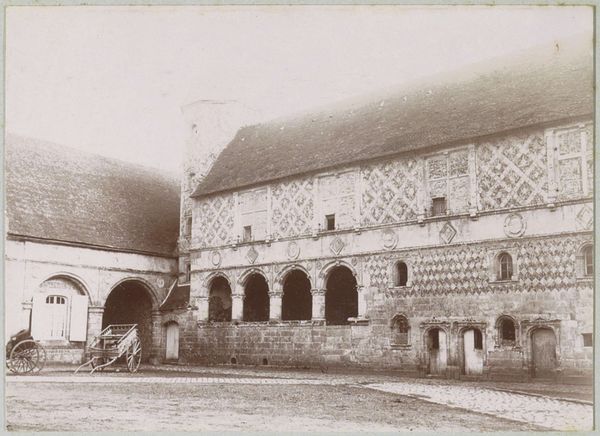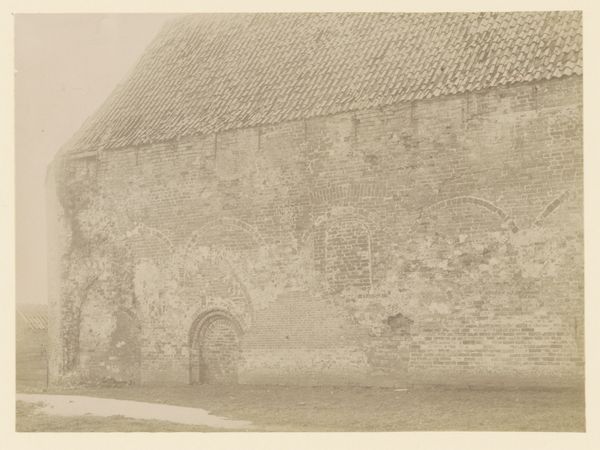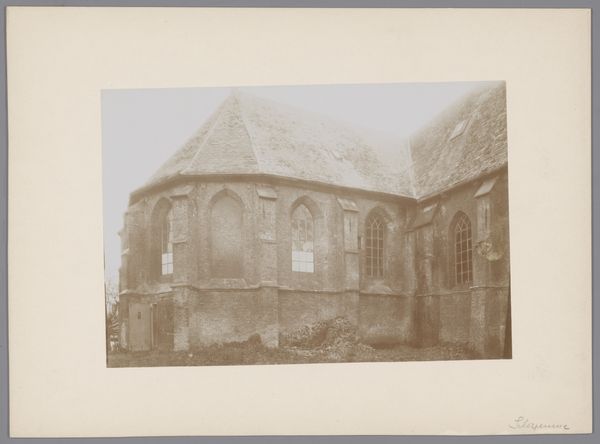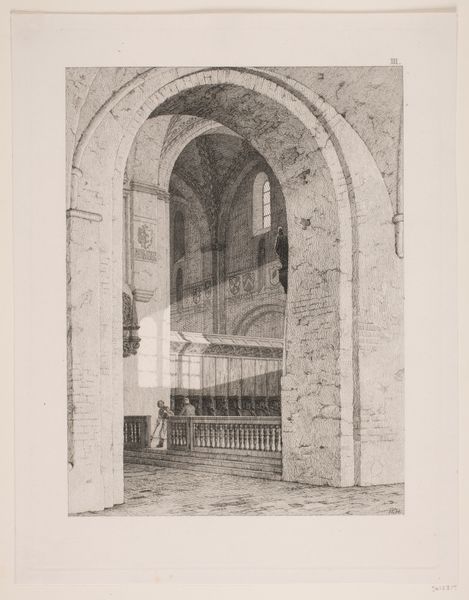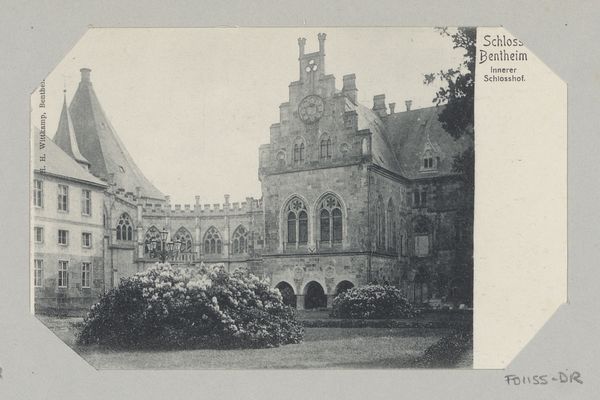
photography, architecture
#
landscape
#
photography
#
romanesque
#
cityscape
#
architecture
Dimensions: height 80 mm, width 109 mm
Copyright: Rijks Museum: Open Domain
Curator: Here we have an image titled "Kloostergang op Mont-Saint-Michel," taken between 1896 and 1898. Editor: It’s striking how quiet and still this photograph feels, almost suspended in time. There's a geometric rigidity, a series of repeating arches... it makes me feel rather small. Curator: Precisely! Delizy, the artist, masterfully captures the Romanesque architecture, specifically the cloister. This wasn’t merely a cityscape; it's about invoking centuries of religious and cultural memory. Cloisters, throughout history, represented places for contemplation and seclusion. Editor: And that’s what feels so potent here—the architecture speaks of that isolation. It makes me think of Michel Foucault's writings on panopticism and how architectural spaces are inherently connected with controlling the subject, or fostering an insular environment of discipline and hierarchy. Curator: Indeed, there is this idea that the design is to isolate, to some extent. However, cloisters historically functioned as both private, solitary spaces, and communal gathering spaces. Looking beyond Foucault, Mircea Eliade discusses sacred space versus profane space. This work is so powerful because the space depicted has, for centuries, represented an access point to something sacred, otherworldly. Editor: That's a crucial point, it provides context against overly simplistic critiques, demonstrating it as a locus where spiritual growth occurred, too. How photography frames the relationship between historical architecture, power structures, and lived experience seems critical to discuss. Curator: Certainly, Delizy allows the viewer to access the convergence between space and experience—the psychological impacts embedded in that physical structure, in what, today, remains part of Mont-Saint-Michel's legacy. Editor: Yes, it’s as much about the physical structure as about the legacy we give it through social interpretations and lived experience, and how art captures and reifies the monument in question. Thank you for sharing the depth of its context! Curator: My pleasure, I find that revisiting these monuments through a historical lens helps reveal enduring motifs.
Comments
No comments
Be the first to comment and join the conversation on the ultimate creative platform.

